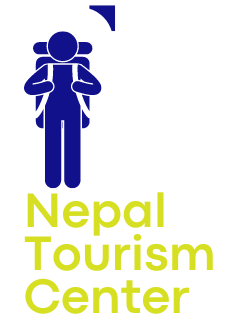Traveling from Kathmandu to Pokhara is one of the most picturesque and iconic journeys in Nepal. Covering a distance of approximately 206 kilometers, this route offers travelers a firsthand experience of Nepal’s breathtaking natural beauty, cultural richness, and rural charm. The road winds through valleys and along rivers, showcasing some of the most diverse and dramatic landscapes in the country. Here’s everything you need to know about this unforgettable trip.
The Route: Kathmandu to Pokhara
The journey begins in Kathmandu, Nepal’s bustling capital city. As you leave behind the chaotic streets and urban life, the road transforms into a gateway to the serene and scenic countryside. This adventure promises awe-inspiring landscapes, tranquil villages, and glimpses of the majestic Himalayas that stand as sentinels over the horizon.
Direction from Kathmandu
From Kathmandu, travelers head west along the Prithvi Highway, a vital roadway connecting the two cities. The highway is known for its winding roads that follow the contours of deep valleys, offering stunning views of rivers, rock gorges, tiered rice terraces, and distant Himalayan peaks. The road provides a sense of anticipation and excitement as you move closer to the tranquil city of Pokhara.
Highlights Along the Way
Thankot and Beyond
Your journey officially begins once you pass the Thankot checkpoint, about 4 kilometers from Kathmandu. This is the first taste of Nepal’s countryside for many travelers. As the road climbs and crosses the rim of the Kathmandu Valley, you’re greeted with panoramic views of the Ganesh Himal, Himal Chuli, and the twin peaks of Manaslu on clear days. Below, the winding Trishuli River and Mahesh Khola create a stunning natural backdrop that sets the tone for the rest of your journey.
This stretch of road also provides a unique vantage point to witness the stark contrast between urban and rural Nepal. From bustling markets and roadside stalls to isolated farming terraces and forests, the transition is mesmerizing.
Naubise to Mugling
From Thankot, the road descends to Naubise and continues through several small towns, including Dharke, Benighat, and Kuringhat. Each stop offers unique views and insights into rural life, with opportunities to interact with locals or sample traditional Nepali snacks. The road here snakes dramatically around steep hills in a series of switchbacks, adding an element of thrill to the journey.
The Trishuli River becomes your constant companion, offering views of river rapids, sandy banks, and lush forests along its course. Suspension bridges and small riverside settlements are scattered throughout this stretch, offering picture-perfect moments that highlight the harmony between nature and human habitation.
Mugling to Pokhara
After Mugling, the highway branches off toward Pokhara. The scenery evolves as you move west, with lush greenery, gently sloping hills, and small settlements inhabited by the Baun, Chhetri, Magar, and Gurung communities. These ethnic groups enrich the region with their distinct traditions, culture, and hospitality, adding another layer of interest to your journey.
The road from Mugling to Abukhaireni and Dumre is relatively smoother, offering travelers a more comfortable ride compared to the earlier sections. As you near Pokhara, the towering peaks of the Annapurna range begin to dominate the skyline. These snow-capped mountains, combined with the lush hills and pristine rivers, create a magical entrance to Pokhara.
What to Expect
Road Conditions
The Prithvi Highway is currently undergoing construction due to a tunnel project, leading to some rough patches and delays. However, the unparalleled beauty of the journey makes up for any discomfort. Travelers should be prepared for sharp bends, unpaved sections, and occasional traffic congestion, especially during peak travel times.
Natural Beauty
The road winds through some of the most stunning landscapes in Nepal. From the precipitous hills and rock gorges to terraced rice fields and pristine rivers, every turn offers a new view to admire. The variety of ecosystems and terrains along the way makes this journey a treat for nature lovers and photographers alike.
Local Culture
The journey is not just about nature; it’s also an opportunity to experience Nepal’s diverse cultural heritage. The roadside towns and villages are home to friendly locals, traditional markets, and roadside eateries offering authentic Nepali cuisine. Interacting with the locals can provide valuable insights into their way of life, traditions, and history.
Travel Tips
- Best Time to Travel: The best time to travel is during the spring (March-May) and autumn (September-November) seasons when the weather is clear, and the views are at their best. These seasons also coincide with festivals and cultural events, adding more vibrancy to your trip.
- Mode of Transport: Options include private vehicles, tourist buses, or local buses. Each offers a unique experience, with tourist buses providing more comfort and safety. Adventure enthusiasts can even consider biking along the route for a more immersive experience.
- Safety: Drive cautiously, especially on sharp bends and rough patches. If you’re prone to motion sickness, consider taking preventive measures. It’s also wise to plan your journey to avoid nighttime travel, as visibility can be challenging.
- Essentials: Carry water, snacks, and a fully charged phone. Don’t forget your camera to capture the scenic vistas! Additional items like a travel pillow, sunscreen, and a light jacket can enhance your comfort during the journey.
Conclusion
The journey from Kathmandu to Pokhara is more than just a commute; it’s an adventure that showcases the heart of Nepal. From towering Himalayan views and tranquil rivers to vibrant local culture, every kilometer offers something special. Whether you’re a first-time traveler or a seasoned adventurer, this scenic route promises memories that will last a lifetime. Embrace the journey, take in the sights, and let the road lead you to the enchanting city of Pokhara.

Leave a Reply